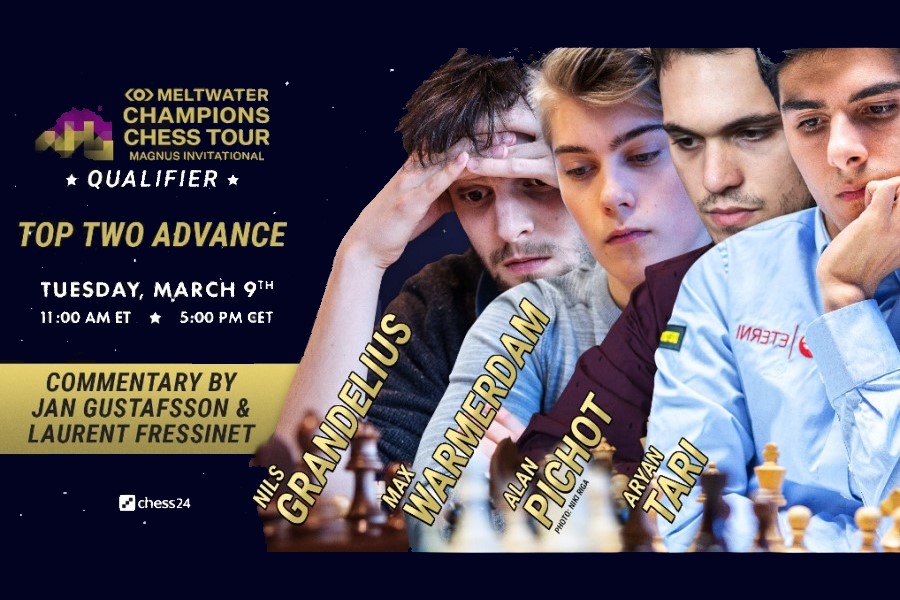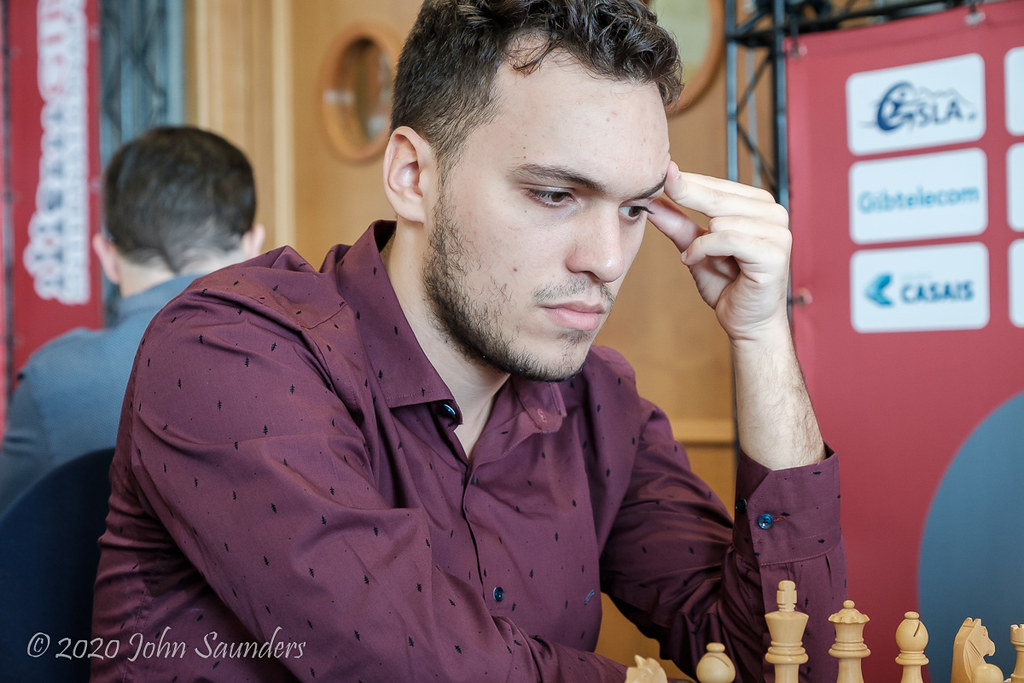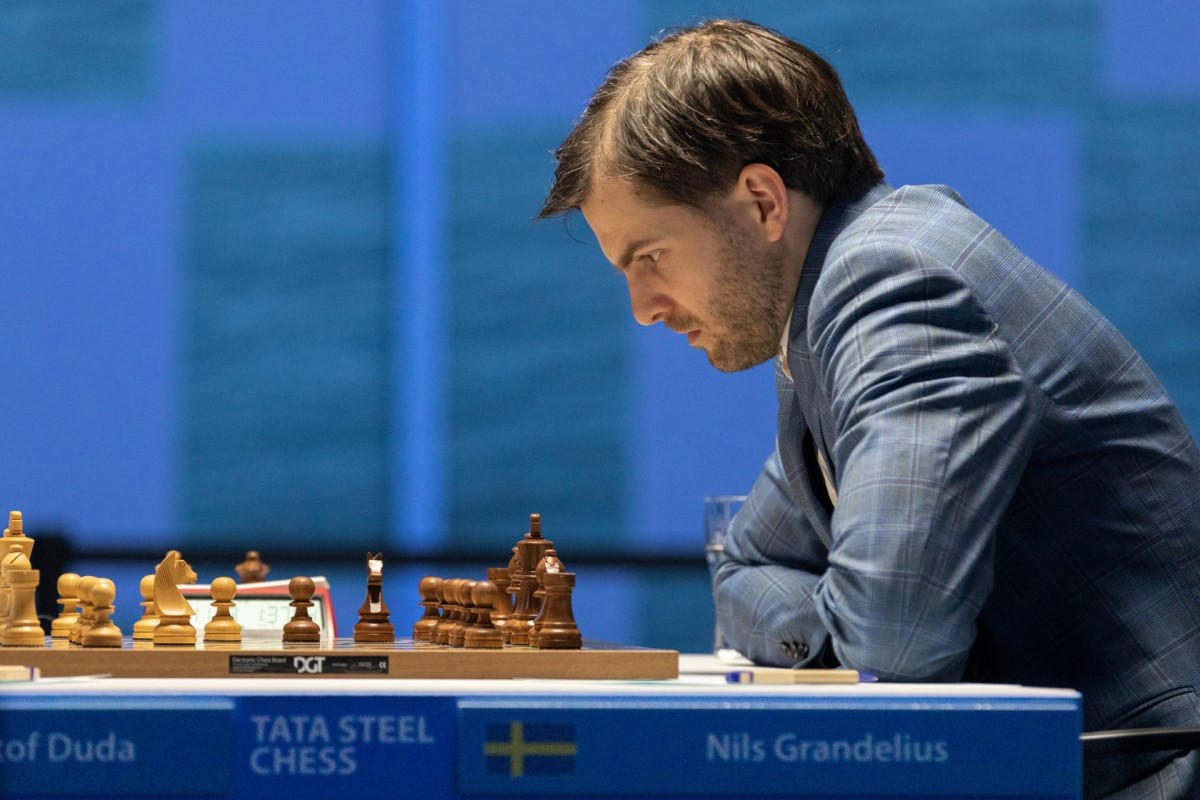


The fourth stage of the Meltwater Champions Chess Tour will be played on March 13-21, with Magnus Carlsen heading a 16-player field which will include tour leaders Teimour Radjabov and Wesley So. The organizers have decided to once again use the name ‘Magnus Carlsen Invitational’, the same name used in the first online event of the 2020 online tour organized due to the pandemic.
Before Tuesday’s qualifier, fourteen players had already been confirmed to participate, with Anish Giri and David Anton getting spots based on popular vote. The remaining two spots, however, were to be decided in a 4-player double round robin qualifier. Johan-Sebastian Christiansen was supposed to participate, but a last-minute incident prevented him from playing (the following is the first tweet of a six-part thread):
Today I was supposed to play the qualifier for Magnus Carlsen Invitational and I had been preparing for a long time and felt really good, and especially honored to receive a chance to play in the Champions Chess tour! pic.twitter.com/D23WwjMUqJ
— Johan-Sebastian Christiansen (@GMJSChr) March 9, 2021
In the end, Nils Grandelius, Aryan Tari, Alan Pichot and Max Warmerdam entered the double round robin played on Tuesday starting at 17:00 CET. Players received 10 minutes for the entire game, plus a 5-second increment starting from move one. In case of a tie for a qualifying spot, a 2-game 5+3 match would have followed.
Grandelius — who came from scoring 6/13 with wins over Duda, Donchenko and Vachier-Lagrave in Wijk aan Zee — was the rating favourite and was paired up against underdog Max Warmerdam in the first round. Warmerdam got off to a flying start, as he beat the Swedish GM with the black pieces:
Black had a better position out of the opening, but saw his opponent creating practical difficulties at every turn during the middlegame. In the diagrammed position, Warmerdam has his pieces pointing at the vulnerable f2-square, but if he does not take advantage of his initiative White has plenty of counter-chances with his heavy pieces deep in the opposite camp. Grandelius, however, faltered with 34.Ne4 (34.Rf1 was the correct defence).
Now Black had 34...Nxf2 — after 34.Rf1, 34...Nxf2 would have been responded by 35.Rc7 and the battle continues. After the text, Grandelius’ 35.Rc7 does not work due to 35...Nxe4, attacking the queen. White resigned.

Max Warmerdam | Photo: Alina l’Ami
Pichot also won with black in the first round. In round 2, Grandelius bounced right back with a win over Tari. The Swedish grandmaster had black against Pichot in round 3:
Out of a Sicilian, the players traded queens on move 9, but that did not mean that tactical opportunities had fully disappeared from the position. Grandelius blundered with 26...Be8, allowing Pichot to play the good-looking 27.Nf5+, gaining an exchange — the game continued 27...exf5 28.Rxf2 and the computer already gives white a massive edge.
Much like in round 1, Grandelius was on the defensive and showed great resourcefulness to create tough problems for his opponent. Except this time he actually saved a half point:
Pichot simplified into a rook endgame with two extra pawns, but failed to find the precise continuations that would have granted him the win. The game lasted 15 moves from the diagrammed position until a 68-move draw was agreed in an equal position.
Karsten Müller took a closer look at this peculiar endgame.
In the 10-minute game, Grandelius showed excellent practical skills to get a key half point in the race to get one of the two qualifying spots.

Alan Pichot | Photo: John Saunders
Pichot was leading the tournament at halftime, with Warmerdam and Grandelius sharing second place a half point behind. In the key encounter facing the chasers, Grandelius defeated the 20-year-old Dutchman with the black pieces:
Grandelius again played the Sicilian, and saw his opponent giving up an exchange to get attacking chances on the kingside. Warmerdam erred in the above position with 34.g5, as Black got the initiative with 34...Qa3+ 35.Kd2 fxg5 36.Qxg5 Rxf2+:
There followed 37.Ke3 Qf8 38.Bd1:
Here Grandelius faltered with 38...Rf4, giving White a chance to create threats with 39.Re6. In the diagrammed position, 38...Ra2 or the more natural 38...Rf1 would have retained the initiative — for example, 38...Rf1 39.Be2 Qf2+ 40.Kd2 and 40...g4 starting to push the dangerous passed pawn while White has little chances to create counterplay.
The queens were swapped shortly after in the game, and it was Warmerdam who made the last mistake, as he could not make the most of his strong central pawns while an exchange down in the endgame. The Dutchman gave up his bishop to prevent the g-pawn from promoting, and resigned in the following position:
Grandelius and Pichot were sharing the lead with two rounds to go. The Argentine defeated Warmerdam in the next round, while Grandelius drew with Tari. A draw in their final-round direct clash gave them both a spot in the upcoming Magnus Carlsen Invitational.

Nils Grandelius | Photo: Jurriaan Hoefsmit